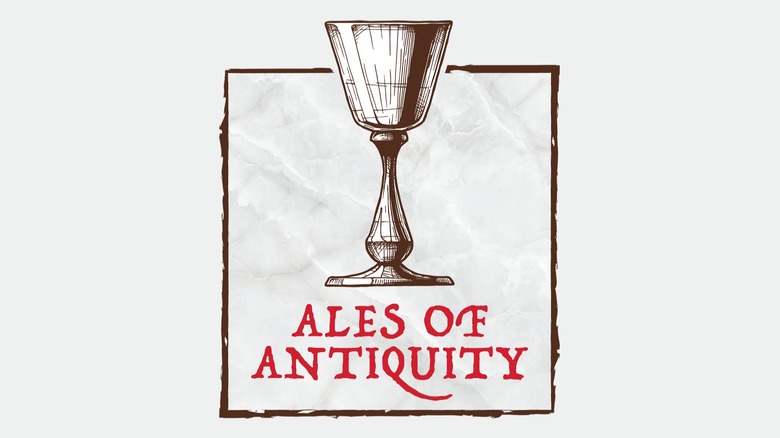What Was Viking Beer Like (And Does It Still Exist Today)?
You may not think of alcohol as a means of hydration — but for the 9th century Vikings, when a mug of ale was easier to access than a glass of clean water, downing a couple of low-alcohol pints a day (even for children) was strangely necessary. But the practicality didn't stop them from having fun with their drinks. Viking-style ale was likely made with barley and is said to have a spicy and herbal flavor owed to a blend of botanicals known as "gruit," which could include yarrow, bog myrtle, wild rosemary, juniper, and more.
There is an important distinction between beer, ale, and mead here. Ale is brewed using malted barley, water, and yeast, whereas beer uses "hops," the dried flowers of the hop plant, to add flavor and extend shelf life. Although hops may have sometimes added to Viking drinks, whether the plants grew in their region is unclear, and the methodology wasn't popularized until much later, making it more likely that ale and fermented honey mead were the drinks of choice for the seafaring Nordic people. Historians' best guess is that the drinks were yeasty and cloudy, since it wasn't filtered in the same way ale is filtered today, and had a relatively low alcohol content at around 2-3% ABV. However, stronger stuff was likely brewed for celebrations or before battle.
It would be a stretch to say that Viking ale exists today, since the information we have about their brewing techniques and flavors comes from a smorgasbord of archaeological evidence, from fire-cracked heating stones to references in Norse literature and oral tradition. All of these differing pieces of information leave some room for interpretation and make it difficult to pin down the exacts of Viking ale. But there are various recreations for sale from online brewery shops that try to incorporate gruit flavors — and if you really want to drink like a Viking, you can always buy a drinking horn to sip from.
One researcher's hunt for Ales of Antiquity
Self-proclaimed beer archeologist and University of Colorado, Boulder Classics professor Travis Rupp has a penchant for researching and even recreating beers from times past. In 2019 and 2020, he partnered with Avery Brewing Co. to create the "Ales of Antiquity" series. The series resulted in the reproduction of an 825 B.C. beer drank by Italian monks, a Revolutionary War-era porter similar to one enjoyed by George Washington, and a Viking-inspired beer based on information collected from old stories, as well as tools found in the debris of shipwrecks.
His recreation was flavored with juniper branches and made with baker's yeast, and while it was fermented in regular brewing equipment for convenience, he noted that his research revealed it was traditionally fermented in a hollowed-out juniper tree. The Vikings would then pour their drink into wooden cups if they were sitting down for a meal. They also used drinking horns made from cattle horns if they were passing the ale around a table or quickly downing it for liquid courage before battle. Together with a slice of their famously well-stored Viking bread and a maybe drizzle of honey that never expires, the Vikings were set for some pretty good meals.

